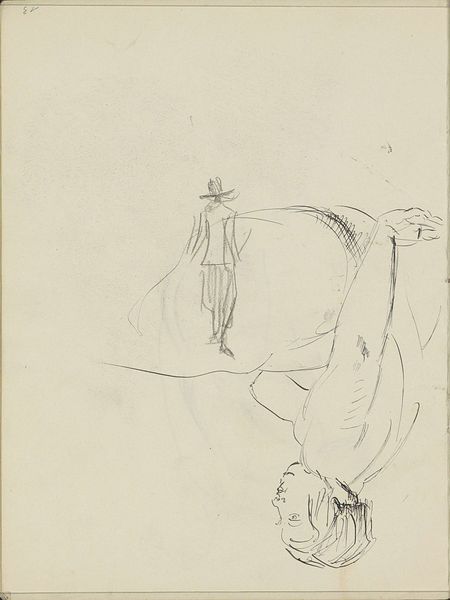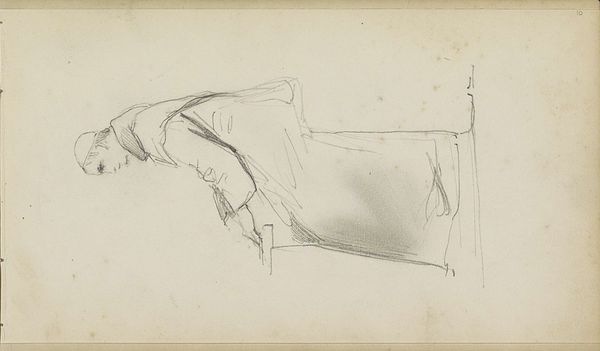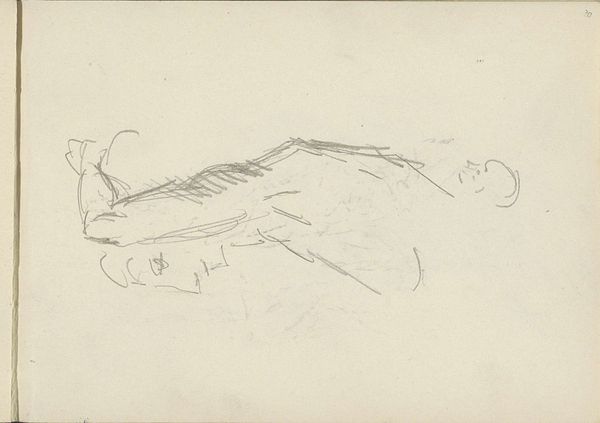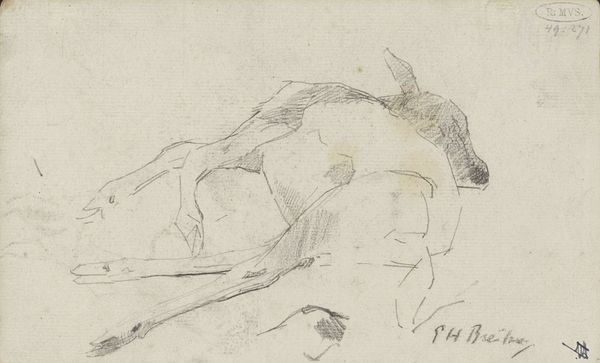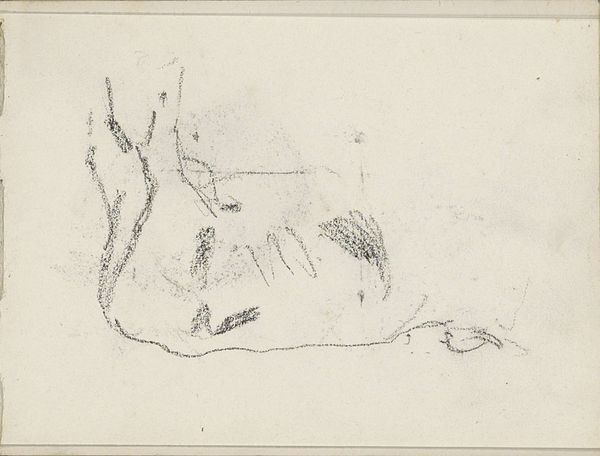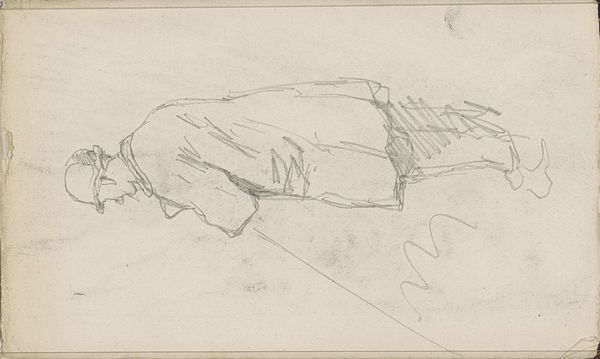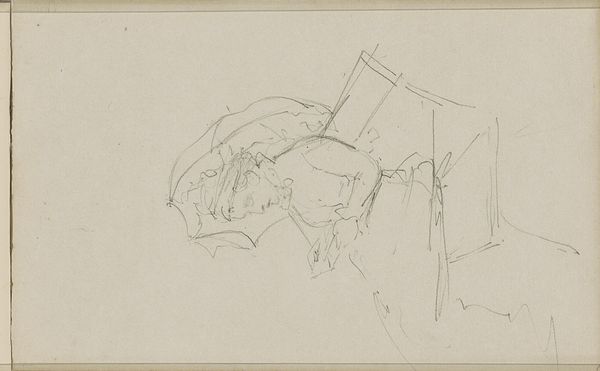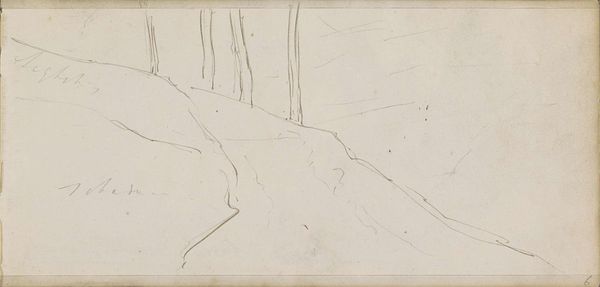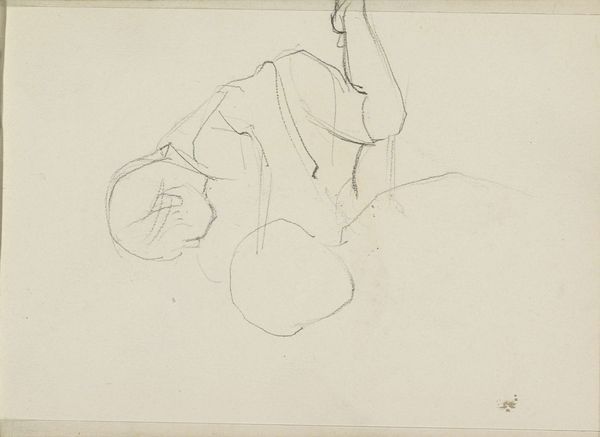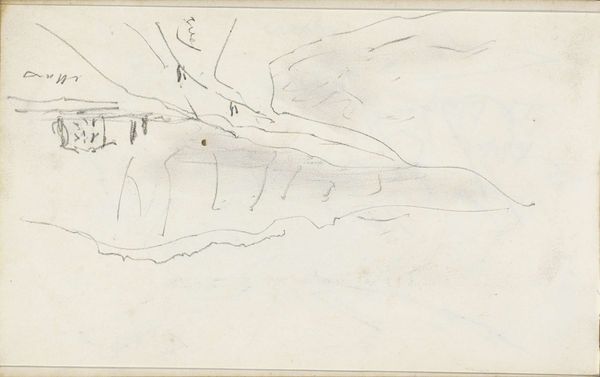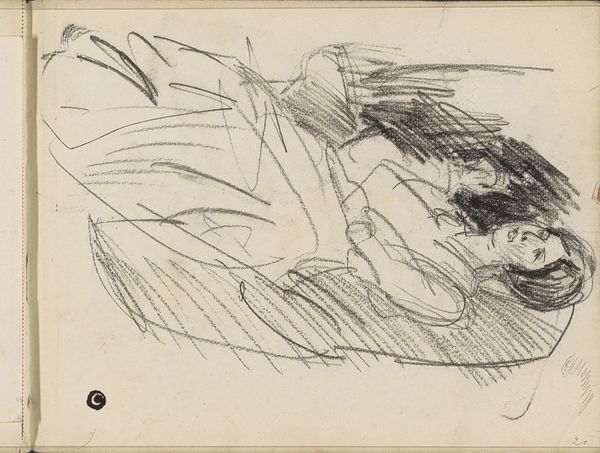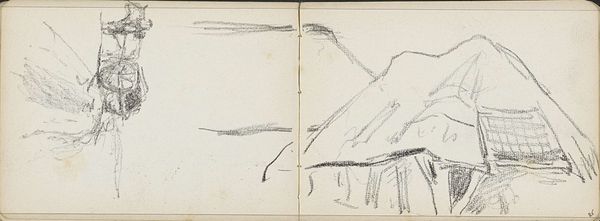
drawing, pencil
#
drawing
#
pencil sketch
#
landscape
#
road
#
romanticism
#
mountain
#
pencil
Copyright: Rijks Museum: Open Domain
Editor: Here we have Johannes Tavenraat's pencil drawing, "Weg tussen de bergen aan de Maas," created around 1840. It depicts a road winding through mountains. It feels very unfinished, almost like a fleeting impression. What do you see in this piece? Curator: It's a powerful sketch, isn't it? For me, it speaks volumes about 19th-century European expansion and Romanticism's relationship with landscape. Consider the historical context: the burgeoning industrial revolution, colonial pursuits... How does depicting this imposing landscape function ideologically? Editor: I hadn’t really considered that. You mean, it's not just about pretty mountains? Curator: Exactly! The Romantics often portrayed nature as sublime and untamable, a place for individual exploration. But this also coincided with and potentially justified the period's rampant exploitation of natural resources and imperial expansion. Who had access to these sublime landscapes, and whose access was denied? The "road" in the title also evokes specific connotations of freedom and possibly displacement. How can we analyze this road's construction through the lens of gender and class? Editor: So, by glorifying these untouched landscapes, were they masking the impact that humans were having on them and excusing social inequality? Curator: It's definitely a complex, often contradictory relationship. We need to think critically about whose perspectives were—and were not—represented in these depictions of nature and the impact that they had on creating societal and ecological perceptions of that time. Editor: That’s a really thought-provoking perspective. I'll definitely look at Romantic landscapes differently from now on! Curator: Precisely! By examining the historical context and power dynamics, we can gain a much richer understanding of this seemingly simple drawing.
Comments
No comments
Be the first to comment and join the conversation on the ultimate creative platform.

